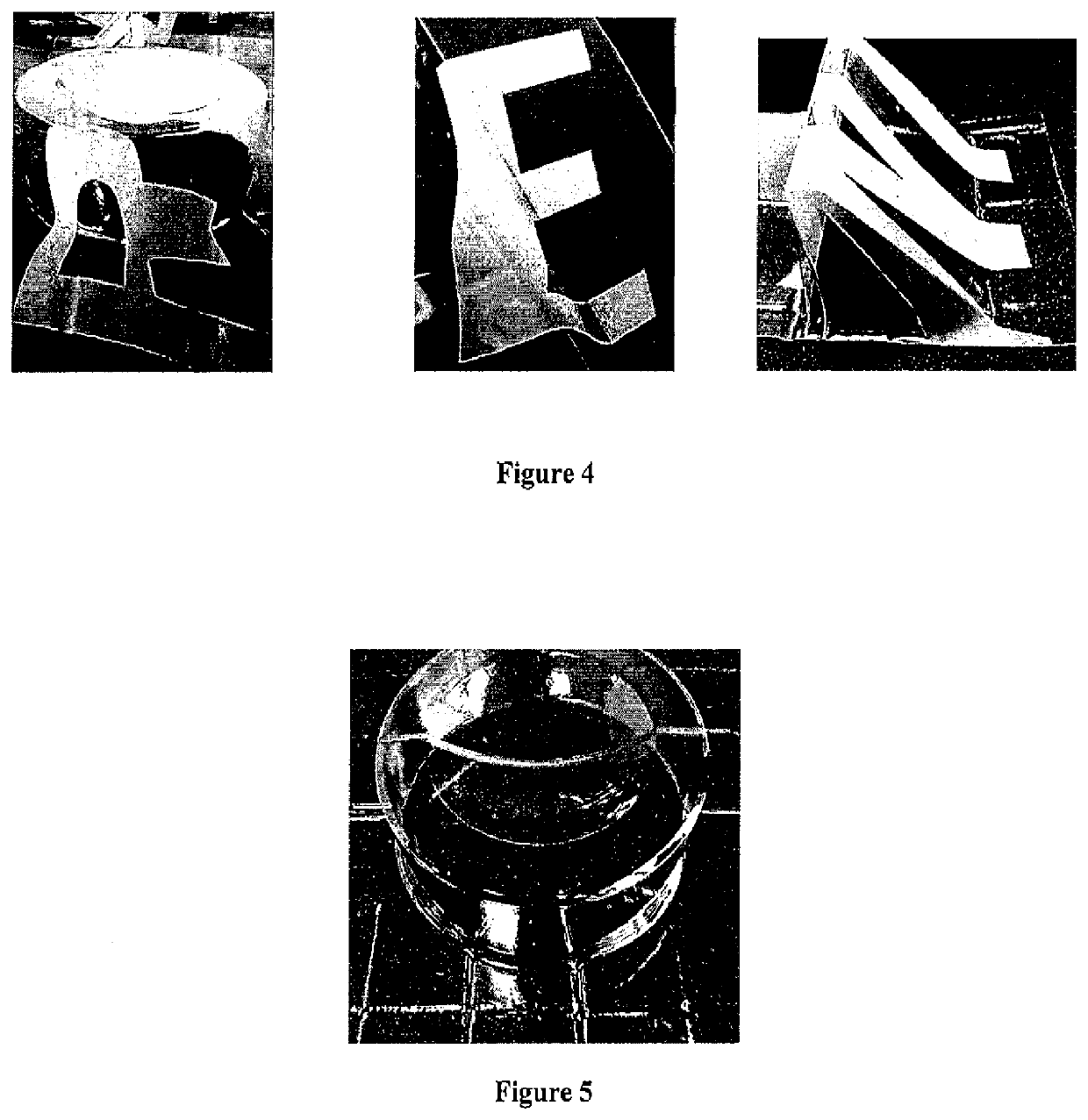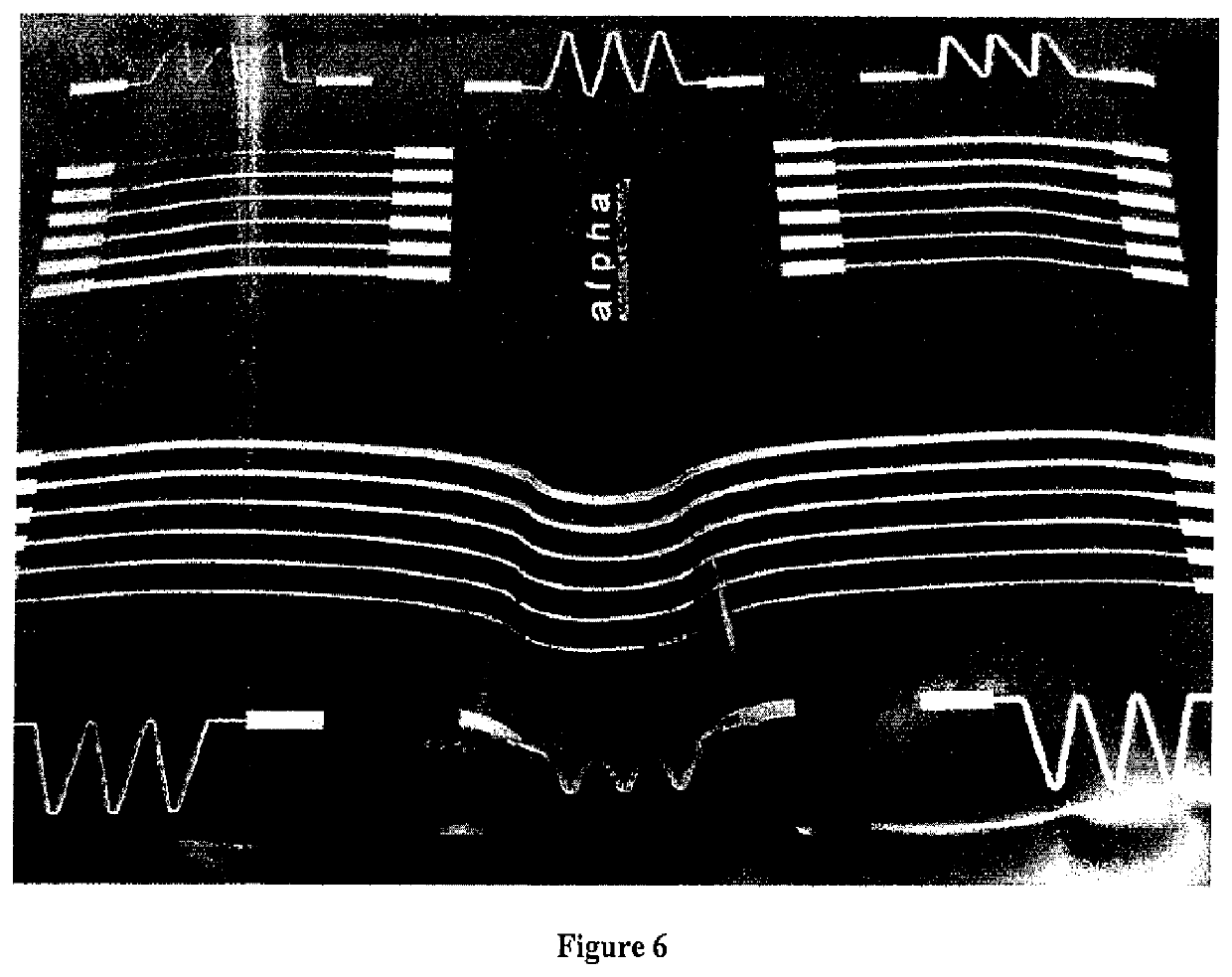Dielectric ink composition
a technology of dielectric ink and composition, applied in the direction of dielectric characteristics, inks, printing, etc., can solve the problems of poor interconnection performance and reliability, system incompatibility with conductive layers, and inability to stretch, so as to improve thermal and reliability properties of devices, reduce the effect of resistivity change and high resistivity
- Summary
- Abstract
- Description
- Claims
- Application Information
AI Technical Summary
Benefits of technology
Problems solved by technology
Method used
Image
Examples
example 1
Curable Dielectric Ink
[0118]An organic medium for the composition of the invention was prepared as follows: 15 grams of a linear aromatic polyester resin (Dynapol, available from Evonik) was added to 170 grams of magnetically stirred carbitol acetate (boiling point 230° C.) and 40 g Dowanol EPh glycol ether (available from Dow Chemicals). A rheology modifier, resin and adhesion promoter were also added to the mixture. The mixture was heated to 60° C. and stirred at this temperature until a clear solution was achieved (approximately 4 hours). The solution was allowed to cool slowly to ambient temperature.
[0119]The viscosity of the resulting dielectric ink composition after 24-hour ambient temperature rest was measured at about 12,000 centipoise (at 20° C.) on a Brookfield RVT viscometer, 5 rpm, No. 5 spindle. The dielectric ink composition was printed on a 100-micron thick electrical grade PET film through a 0.50 mil silk screen. The printed parts were dried in a laboratory air circu...
example 2
[0127]A dielectric ink was obtained by the same procedure described in Example 1 except that 250 parts by weight (25% by weight) of a talc powder with predominant particle size in the range from about one to about twenty microns, an average major particle diameter of 2 μm was blended and dispersed uniformly by a mixing and grinding machine and to obtain stretchable and formable dielectric ink. This composition also contained a polyester polyol.
example 3
[0128]A dielectric ink was obtained by the same procedure described in Example 1, except that the composition used no solvents.
PUM
| Property | Measurement | Unit |
|---|---|---|
| boiling point | aaaaa | aaaaa |
| boiling point | aaaaa | aaaaa |
| temperature | aaaaa | aaaaa |
Abstract
Description
Claims
Application Information
 Login to View More
Login to View More - R&D
- Intellectual Property
- Life Sciences
- Materials
- Tech Scout
- Unparalleled Data Quality
- Higher Quality Content
- 60% Fewer Hallucinations
Browse by: Latest US Patents, China's latest patents, Technical Efficacy Thesaurus, Application Domain, Technology Topic, Popular Technical Reports.
© 2025 PatSnap. All rights reserved.Legal|Privacy policy|Modern Slavery Act Transparency Statement|Sitemap|About US| Contact US: help@patsnap.com



